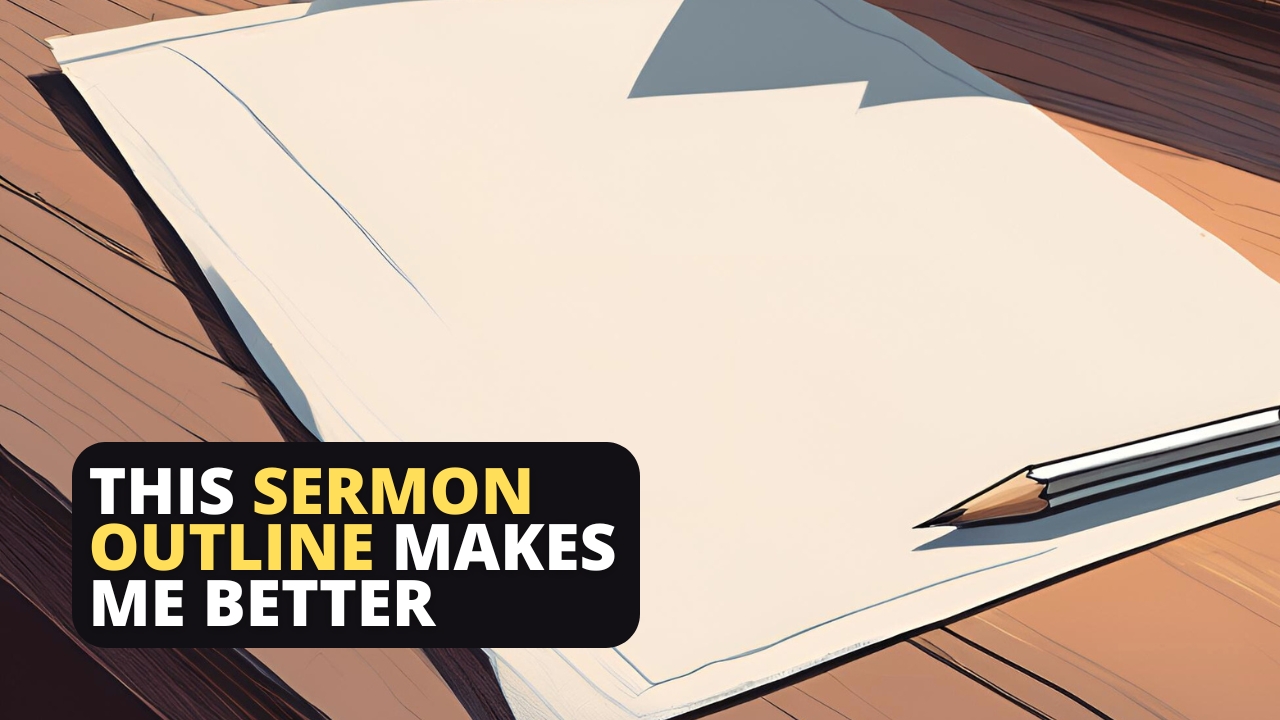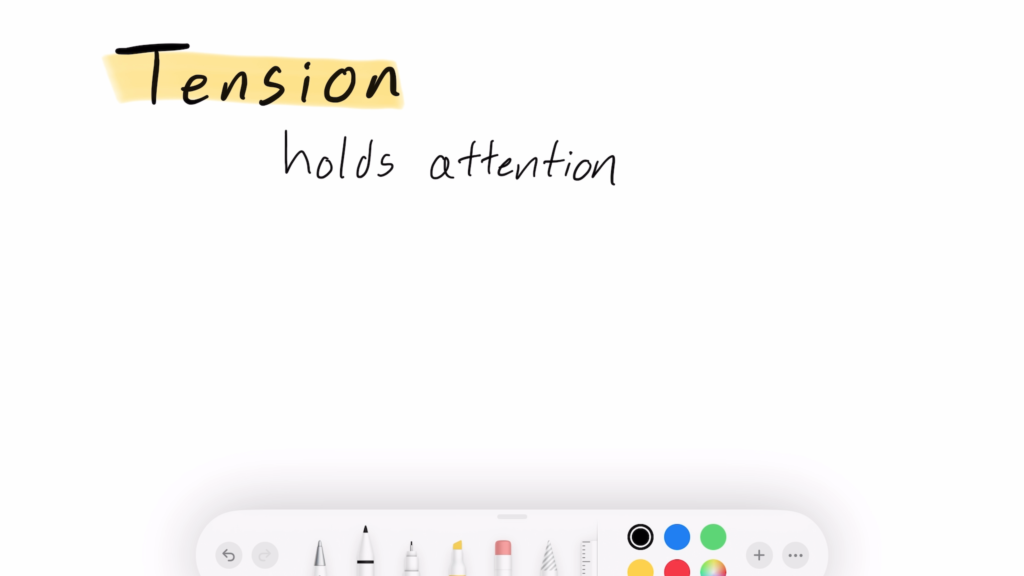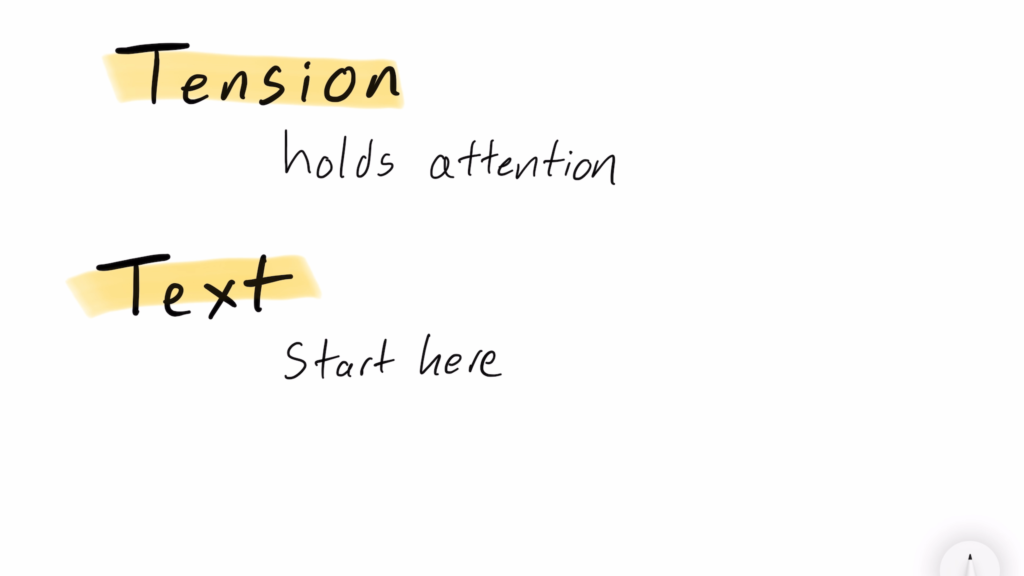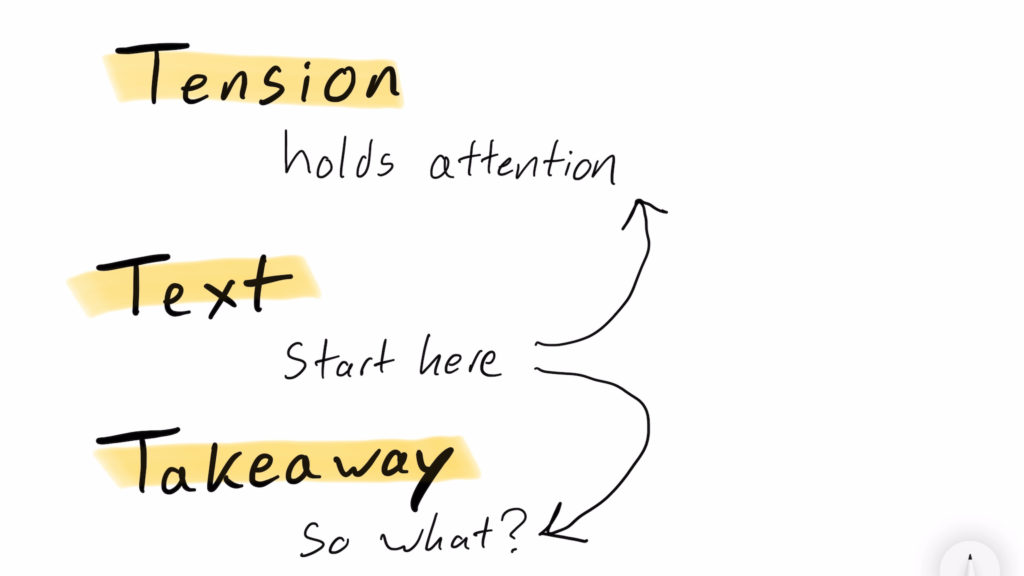The Simple Sermon Outline That Helps Me Preach Better

Do you ever struggle to write a sermon? Maybe you stare at a blank page and don’t know where to begin. You have a general idea of what the sermon should be about, but you don’t know how to put it all together. If so, you need a simple sermon outline template.
A lot of new preachers and Bible teachers don’t know where to begin and once they do begin, they aren’t sure where to go.
I know because that was me. In my early years of ministry, I would stare at the blinking cursor on a blank page and have no idea what to do. Worse, once I began writing, I often had no idea where the sermon would end up. And if the preacher is confused, just imagine the confusion of the audience.
We’ve all sat in churches where a pastor meanders from one disconnected thought to another leaving us dizzy and uncertain what the point of it all was.
The old saying is true: “A mist in the pulpit is a fog in the pews.”
This was a real challenge for me until I began using a basic sermon outline to help structure my preaching and keep me focused on what a sermon is intended to accomplish.
Now, there are a lot of different sermon outlines that people use. I have been a pastor for over 15 years, and have been sharing what I learn about preaching at ProPreacher.com for over a decade now, and I have tried all of these formats and more, but I developed a new one that I’ve been using over the last few years, and it has genuinely become my favorite.
I have grown and improved a lot in my preaching over the years, and this outline has been a big help along the way.
It’s a simple three-part sermon outline. Each section begins with the letter “T” to help me remember. But this structure helps me write my sermons faster and most importantly keep it more interesting, focused, and clear for my church.
Each section is a reminder of what I need to do in each part of the sermon.
So if that sounds good to you, allow me to explain.
Tension

If you want to preach in a way that captivates your listeners, holding their attention from beginning to end, you have to understand this age-old truth: Tension holds attention.
Why do great stories in books and movies captivate audiences? Tension.
There is conflict in every good story so you want to know what happens next. That’s why a great series will end on a cliffhanger between each episode or movie. This creates an unresolved tension that grabs your attention and makes you hungry for more.
Why do list posts perform well online? Tension.
If you say there are five things I need to know, and you are only up to point three, I want to know what the other two points are. It is a mystery that needs to be revealed.
Why is asking a rhetorical question such a powerful tool in rhetoric? Tension.
People’s ears perk up when you ask a question because they cannot leave it unanswered. They want to know the answer or check if they would answer it the same as others.
So start with a question that needs an answer or a story that introduces conflict.
Jesus knew this. He asked a lot of questions. He told a lot of stories. It’s not manipulative; it’s skillful communication.
Tension generates interest. And when done the right way, it tells the audience what the sermon is going to be about.
This section also raises the stakes. Why is this such a big problem? What damage is this causing in society or in people’s lives? What pain is a result of this? What will happen when this is taken to the extreme or is not resolved?
You build a sense of urgency, the tension is boiling and it needs to be resolved.
When you set up this tension by asking a pointed question that connects a real need the audience feels, they first have a strong understanding of what the sermon is going to address. Second, they lean in because they not only want to know the answer, they need it.
This is what a good sermon introduction does. So, instead of calling this the introduction, I call it tension because a great introduction creates conflict. There is a tension that must be resolved.
And what do we do with all this unresolved tension? We go to the Bible and find the answer. That’s the next section.
Text

In this part of the sermon, you open the Bible and teach what it says.
We have set everyone up with the tension, and they are begging for an answer. So you say something like, “Jesus gives an answer to this question that has the power to change your entire life.” Or “So today, open your Bible to XYZ chapter and verse where God deals with this very issue.”
Now, although this is the middle section, I start here when writing a sermon. What does the Bible say?
If you are going verse-by-verse, this is more natural. But if you are preaching topically, you still better pick a key text.
The main point of your sermon should be the main point of the text. Then, after you understand the main point, go back and find the tension that this answers. Now you have a clear picture of exactly how the sermon should begin.
So you have your main point and maybe a few sub points in here. You are reading and giving context and color to what the Bible says so that your listeners understand clearly.
But telling people what the Bible says leads to one last bit of tension: How does this affect you and me? That’s the last section.
Takeaway

With a clear understanding of the problem (tension) and the main idea that solves the problem (text), end with a call to action.
Help people get a picture of how this teaching applies to our lives. What is the takeaway?
Now, you will undoubtedly have some takeaways that come up while you are teaching what the Bible says, but this is where you focus on them most.
You are answering the question, so what? What do we do with this.
I often discuss the tension again, restate the main point we drew from the Bible, and then ask, “So what does this look like?” “How do we apply this?” or “What does this mean for us today?”
And then, you paint a portrait or two showing how it might apply to your audience. This is best done when you know your audience. You know the things your people are struggling with because you counsel them and pray for them throughout the week. You know the kinds of jobs they have, family dynamics they balance, and more.
So just think through how it would apply to people in different areas of work, family, school, or church.
How might this be applied to different stages of life, such as those who are young and single, married with kids, or empty nesters?
Be careful not to burden people with the application here, but talk about some different scenarios that people may encounter and how the main point of this verse applies.
This is a good time to share a story of when you or someone in your church applied this biblical principle and how it changed their lives. You could also share how you have failed to apply this principle and how much it cost you.
Then, end strong with the main point—your key takeaway from the text.
Use A Sermon Outline
Whether you use mine or not, use a sermon outline to structure your preaching.
It will help the next time you look at the dreaded blank page.
It not only helps me write better sermons, but it also helps me preach better without relying so heavily on my notes because I know what the goal of each section is.
You know that you are creating tension at the beginning, teach the key point of the text in the middle, and end by giving everyone a takeaway application for how they should live or think if what the Bible says is true.
By the way, if you like this sermon outline, click here to download my sermon template for free. I use this template every time I open a blank page to start writing a new sermon.
In fact, I have it saved as a shortcut on my computer so that when I type “xsermon” it automatically appears on the page. If that sounds helpful, let me know in the comments, and I’ll create a post showing you how I do it.
If you use the Logos Sermon Builder, which I’ve discussed before, you can even save it as a template.
Now, I don’t know if you realize it or not, but I followed this structure, aside from preaching from the Bible part, for writing this article. I opened with a question to create tension, I taught the key points in the middle, and then I gave you a takeaway to download my template and apply it to your next sermon.
If you’ve gotten this far, it worked to keep your attention. And it works for any sermon because it’s simple.
So give it a try.



Hello!
Good cheer to all on this beautiful day!!!!!
Good luck 🙂
Well thought through …
And simple to remember.
I’m eager to attempt this approach.
God bless you.
Thank you. I would love to hear how it works for you.